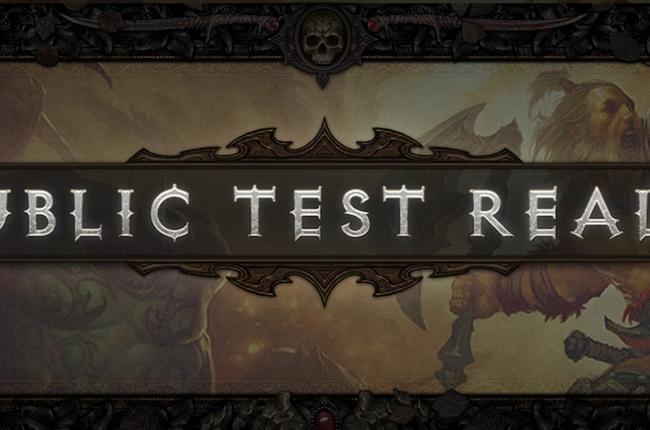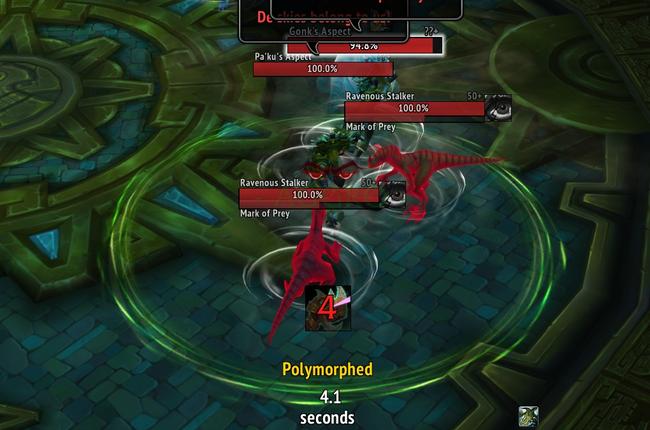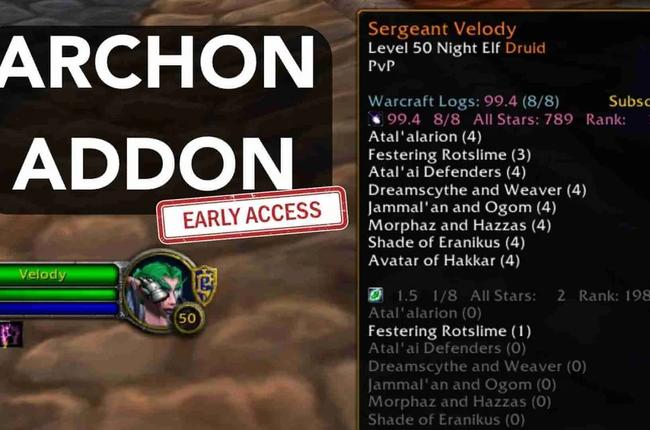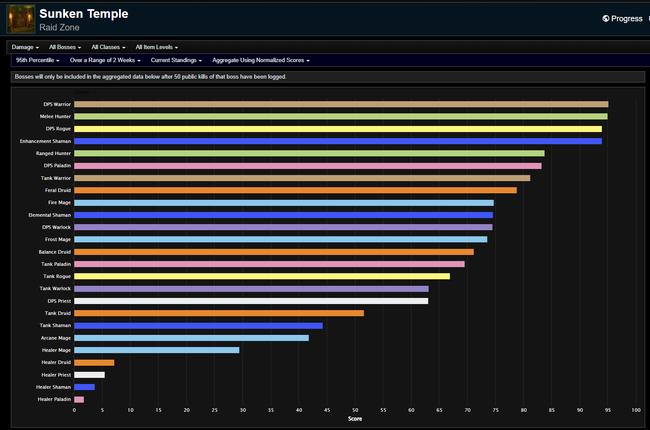Why Diablo 4 Requires a PTR: Here's the Importance

It has been just over seven months since the release of Diablo 4. In an incredible year for gaming, the launch of Blizzard's newest title has been a successful one according to critics around the globe, resulting in a Metacritic score of 86. Since its launch and overwhelmingly positive reception, Diablo 4's development road has been rocky for the game's community. Season 1 and its very first significant content Patch 1.1.0, which included a plethora of controversial nerfs, was met with waves of community criticism. Diablo 4's development team apologized and promised to do better - and the following patches, including Season 2's Patch 1.2.0, indeed showed promise with significant changes to defenses and underperforming classes.
One of the latest content additions to the game, however, perfectly showcases one of the core issues of Diablo 4: The Abattoir of Zir, a seasonal endgame mode introduced with Patch 1.2.3 in early December of last year, was expected to pose a genuine challenge to those who have "done everything else" in Season 2. However, the new endgame content was released with many groundbreaking bugs and exploits, like conjurations counting towards monster progression or players being able to create infinite amounts of Sigil Dust.
Most of these things have been fixed by now - but one burning question, which has come up after every single patch since Diablo 4's release, remains: Why in the High Heavens does Diablo 4 not have a Public Test Realm where players could test upcoming content and help Blizzard to increase the game's overall quality?
PTRs in Diablo 3 and D2R
A quick glance at the history of Blizzard's ARPG franchise shows that multiple Diablo development teams have used PTRs to their advantage in the past. The very first PTR in Diablo 3 was opened to the public with the announcement of Patch 1.0.5 just over four months after the game's release back in 2012:
PTRs are a very valuable tool for our development teams -- when you participate, share your feedback, and submit reports, we can squash more bugs and ensure that the patch we release is of the highest quality possible.
Since then, every major Diablo 3 patch and over 25 Diablo 3 seasons have been deployed on a PTR for over ten years, setting a precedent for streamlined game development and quality assurance.
Almost ten years later, Blizzard's Diablo team once again installed a Public Test Realm for Diablo II: Resurrected. Like Diablo 3 in 2012, the first PTR phase began within six months of the game's release. D2R players will remember the massive database changes introduced with Ladder Season 1, which were developed to resolve ongoing performance issues.
The Public Test Realm (PTR) is a special realm where we can test balance, bug fixes, and other enhancements we make in Diablo II: Resurrected. This test environment is available to all owners of the game, who can play a critical role in testing features and sharing their feedback to improve the overall experience for all players.
The focus of the first PTR will revolve around fixing database issues and making the online environment more robust and flexible under high-volume conditions. This test will be imperative, as it will assist us in stabilizing the gameplay experience ahead of the implementation of Ladder rank play.
The quoted blueposts perfectly showcase what PTRs in Diablo (and all other Blizzard games) are supposed to achieve: Players are asked to stress-test new content and other substantial changes to Blizzard games. In return, the community receives a more polished, high-quality gaming experience.
How Diablo 4 Is Being Tested Right Now
Not much is known about how Blizzard games, and Diablo 4 in particular, are internally tested. Over 9000 people have made it into the game's credits - and almost 400, according to Moby Games, had Quality Assurance roles. It is uncertain how many of these developers are still responsible for testing new Diablo 4 content.
To put numbers into perspective, Blizzard co-founder and Senior Vice President Allen Adham said in 2018 that each development team holds between 100 and 300 people. Since then, Blizzard has been trying to grow quickly to meet production demands, so we can assume that development teams are bigger now than they have been five years ago. In the end, the fact that Diablo 4's launch QA team in 2023 was bigger than a whole development team for a single Blizzard title back in 2018 speaks for itself. No matter the current number of QA and Testing developers - Blizzard knew how important a polished launch experience was, and they invested a meaningful amount of resources compared to the total number of people working on Diablo 4.
In addition to internal testing, Diablo 4's development also seems to rely on feedback from their "Diablo partners" regarding new content. In their Campfire Chat for Patch 1.2.3 back in November, Adam Fletcher stated that the team has been working together with a group of content creators while developing itemization changes coming with Season 4.
Blizzard inviting content creators to test upcoming content is nothing new and has been practiced across multiple franchises. Just recently, Diablo creator and partner Wudijo was able to playtest the Abattoir of Zir right after BlizzCon.
Needless to say, short-lived developer-creator collaborations can't be compared with actual Quality Assurance work by experienced game developers. At last, Wudijo released another video about "everything that is wrong with Abattoir of Zir" after playing through the endgame dungeon for a meaningful amount of time with his characters.
While creator input can and also certainly has made a difference, the only measurable unit of successful internal quality assurance and testing in Diablo 4 is the number of game-breaking bugs and exploits in the game when new content went live. Ultimately, the community agrees that this particular number is too high - and a PTR would help alleviate this overall negative development.
How Diablo 4 Should Be Tested
It appears that issues recurring with new content releases based on a lack of QA can't be resolved through internal and "Diablo partner" testing. As a result, a Public Test Realm could reduce the staggering amount of bugs and exploits around new content in Diablo 4.
Two blueposts for Diablo 3's Season 27 exemplify how PTRs could be handled.
Regarding how Blizzard should handle PTR testing, the development team needs to follow their old principles. Take Diablo 3's Season 27 as an example:
PTR testing began on July 12, 2022 and was planned to last for 16 days. On July 20, the testing period was extended until August 4, so more than three weeks of public testing. Another three weeks later, on August 26, Season 27 began. In essence, Blizzard gave players three weeks to test the new patch - and took another three weeks to implement community feedback.
Thinking about the most apparent oversights with the release of Abattoir of Zir, for example, three weeks would've been more than enough time for the community to figure out "what went wrong" during initial development - especially looking at Diablo 4's massive community and the "hivemind" aspect of testing content with a lot of players.
Why There's Still No PTR in Diablo 4
We've looked at the franchise's PTR history and the problematic status quo in Diablo 4 - but why exactly is Blizzard not providing a Public Test Realm?
In an interview with the German gaming website 4Players during Gamescom last year, Diablo General Manager Rod Fergusson and Associate Production Director Chris Wilson stated the following:
Do you plan on introducing test servers for upcoming game updates, as has been done with Diablo 3?
Chris Wilson: Generally, it's not planned to roll out future updates via test servers in advance. In Diablo 4, we try to work on new content through contact with the community and their feedback.
Rod Fergusson: A PTR (Public Test Realm) is interesting but also brings challenges in terms of development time, balance, and what is revealed. This is something we're very aware of, as we've tried it in other games. We've heard the feedback, but we're still looking for ways to optimize this feedback loop, and it might or might not be a part of that in the future.
The "challenges" - as Fergusson calls them - around deploying a PTR seem to make sense. Looking at the number of essential parts missing from Diablo 4 since launch, like leaderboards or character load-outs, development time becomes a more than valuable resource - but is it valuable enough to justify not deploying a PTR?
Balancing in Diablo 4 has been a whole challenge in itself even before launch - safely said, a PTR would help more than anything to identify build outliers or overperforming items, for example.
The argument of PTRs spoiling content has been around forever. In WoW, whole expansion storylines have been unveiled through PTR testing and datamining. But what could be spoiled looking at Diablo 4? Compared to the storytelling of other Blizzard franchises, the lore around Cormand in Season 1 and Erys in Season 2 has been quite manageable. The developers themselves said that seasons wouldn't introduce major story beats.
But what about up-and-coming character builds? In Diablo 3, players and content creators could playtest new builds on the PTR to see what's best for the upcoming content update. In Diablo 4, a PTR is not involved, but the overall "content loop" stays the same for a vast majority of players. For example, one of this season's build outliers, Ball Lightning Sorc, has quickly become a community favorite - not because players found out themselves but because websites and content creators reported it. A big part of the ARPG community relies on external information simply because this is how the internet works these days.
What difference does it make to the average player watching a video about a brand-new build two days into the season if it has been found on the PTR or live servers? And to go even further - aren't some of the most influential content creators involved in internal testing anyway, like with Season 4's itemization changes, as mentioned earlier?
Luckily, Fergusson's statement doesn't rule out a future Diablo 4 PTR, so there is still hope. Deploying a PTR certainly requires a fair amount of resources. But shouldn't the advantages outweigh the disadvantages? Shouldn't the number of resources outweigh the number needed afterward to correct the shortcomings of insufficient internal testing? Why has Diablo 3 had a PTR for ten years, and why is Diablo 4 treated entirely differently? Chris Wilson mentions that the developers try to work with the community and their feedback regarding new content - but how should we voice feedback without playing the latest content on a test server before?
The discussion around a Diablo 4 PTR is only one of many that don't make sense looking at other Diablo iterations and their successful approaches to ongoing issues. The silver lining, though, is that Blizzard's communication has improved dramatically. Establishing a Public Test Realm would favor this positive development by providing the most sensical way for the community to create meaningful feedback for Diablo 4's developers to act upon. As a result, the community would be much less critical of newly released content that had been tested publicly before.
A Public Test Realm would not solve every single issue Diablo 4 has right now. However, it would create a win-win situation for both the players and developers looking at the game's current state, resulting in a much better future game experience.





